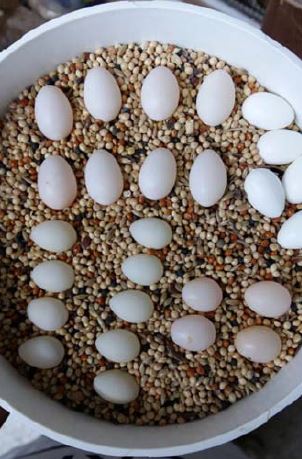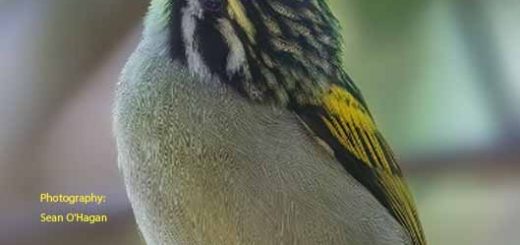Fostering finches: Awesome Advice, Caring, Tips
Fostering finches – by Marcus Pollard
The main bird that is used for fostering is the Bengalese mannikin. Throughout the world, people use this bird to foster their finches – especially the Gouldian finch.
But before you race out and purchase 10 pairs and start to foster like crazy be aware that the really successful fosterers have spent considerable time and energy developing a STRAIN of manikins that will be good fosters.
One breeder I was lucky enough to visit stated that you only needed 2 Bengalese in a cage to rear other chicks. Two males, two females, or a pair were equally useful as foster parents! True. We saw the evidence for this in his parrotfinch breeding rooms. His plan was to allow his parrotfinches 2 nests, which he fostered, then they would be allowed to raise the third clutch by themselves. After this third clutch, they were rested. His results were unbelievable. The descendants of these birds are now happily producing young in aviaries the length of Australia. So much for their being useless!!
Fostering finches – Important points:
- Make sure your fosters are from an established strain that has a proven ability to foster other species.
- If cage breeding make sure your fosters are ‘bomb proof’ and will not leave chicks when you touch the cage.
- If fostering with a related species in an aviary situation make sure that when you change the eggs over the potential foster does not actually see you change over the eggs. (Don’t laugh this IS a VERY important point)
- Don’t look upon your foster as ‘just a Manikin or just a Zebra’. Treat them as if they ARE a pair of Violet-ears or Tanimbars.
- Diet is the key to good fostering so ensure that you research what the parents would be feeding their own chicks so that you can replicate this in the foster parents.
- If using related species in an aviary situation as fosters try to select your fosters from young birds.
- When your fostered chicks are on the perch make sure you put them back with their own species as soon as possible to avoid any imprinting.

The Orange-breast waxbill also appears to be a good foster parent and we have used these to rear Yellow-wing Pytillas with no problem. The Cordon is also not averse to rearing birds that are not closely related. A friend recently gave 3 Melba eggs to a Cordon and they raised 2 young. The interesting aspect of this was that when the Melbas left the nest their ‘true’ parents then took over the task of rearing them and would not let the cordons near them! And we think we know a lot about bird behaviour.
Fostering finches diet
Another key factor is to ensure that the foster parents will feed their young on a diet that closely resembles what the fostered species would get from their natural parents. I guess that means that you would have to get your fosters onto a higher protein diet in order to rear insectivorous species. This too is easier said than done with some species.
I have used the humble Zebra finch to rear the non-livefood requiring species on several occasions but have not had this success with more insectivorous species. They will feed them OK but with seed and not with live food or supplements. In an article I wrote a while back I recorded the difference in crop material that were observed in a pair of Blue-caps that reared Cordons (don’t ask it’s a long story!!).
The crops of these chicks were filled with a ‘milky’ substance comprised of a great deal of live food. However, the Zebras tended to just fill them up with seed. From this you can probably gather that you are going to spend a great deal of time and effort in just selecting your fosters before you even get to the actual fostering.
Conclusion
We can’t all have access to copious amounts of live food in the form of termites or have those extra hours of daylight in the winter so why should that prevent us from keeping some of the more exotic insectivorous species? Use fostering finches as a way of building up your own stock raised on your own live food and if they STILL tell you you’re wrong tell them to remember the Green strawberry!!
Where to Buy finches
Online resources where you can find Finches include:
- Bird Breeders (Just select from the menu to see the other species.)
We compiled a list of our top 10 finches.
You can also follow me on Instagram.


